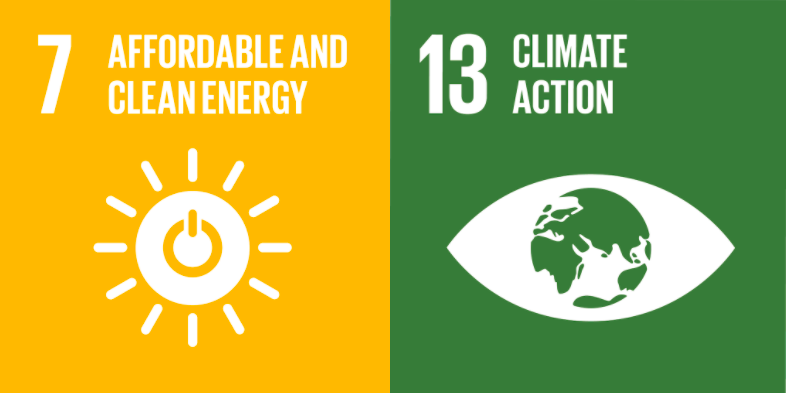Access to sustainable and affordable energy services (e.g. small-scale and community-based renewable energy projects) is a crucial factor in reducing poverty in developing countries. Global finance to developing countries in support of clean and renewable energy in 2017 (USD 21.3 billion) doubles the level from 2010 (USD 10 billion) according to the latest figures of a new indicator under the Sustainable Development Goal (SDG) 7 which is very encouraging to tackle climate change and ensure environmental sustainability. The total investment to developing countries for clean and renewable energy has been robust and reached a cumulative sum of USD 138.9 billion between 2000 and 2017. The International Renewable Energy Agency (IRENA) predicted that despite recent fluctuations due to COVID and other associated financial challenges, the long-term trend for investment keeps increasing for renewables and could reach more than USD 20 billion annually in the years to come. Interestingly, investment in hydropower,which historically received the lion’s share of investment, has decreased. The investments in wind, geothermal and, especially, solar energy have grown significantly in the last few years.
Despite the recent increase in investment, there are major obstacles to implementing renewable energy projects in developing countries. Bangladesh must plan ahead to address those challenges as Bangladesh plans to increase its reliance on renewable sources rather than traditional fossil fuels. The government’s Mujib Climate Prosperity Plan (MCCP) sets a goal of obtaining 30% of total energy from renewable sources by 2030. A recent study published by Cle-Anne Gabriel in Renewable and Sustainable Energy Reviews listed six key challenges for wide adoption of renewables in developing countries, which are: a) inadequate access to institutional finance; b) the price of renewable energy technologies (RETs); c) the lack of skilled labor; d) underdeveloped physical infrastructure and logistics; e) power/dominance of incumbents; f) inadequate government or policy support. Bangladesh’s strong participation in the COP-26 conference on climate change might be indicative of shifting government support for renewables, but other challenges mentioned above are very real for Bangladesh. Policymakers, with all other stakeholders of renewable energy, must plan around those challenges. For example, Bangladesh’s higher education and vocational training must reflect on these impending challenges to develop a new generation of workforce to implement renewable energy. Furthermore, power/dominance of incumbents mentioned in the list is truly dominant in Bangladesh (e.g. coal power plant in Sundarbans) while the world has promised to phase out coal-based power plants. Bangladesh’s central bank has mandated that 2% of all loans issued by the nation’s banks and other financial institutions be devoted to green projects, including renewable energy facilities, which is encouraging. But, there must be extensive review and evaluation of different supporting regulations around renewables. Adequate oversight and checks and balances must be embedded in the systems to eliminate false hope and ensure proper implementation of renewables in Bangladesh.
Bangladesh must also plan ahead to accommodate the challenges with wide adoption of renewable energy implementation. Recently, the U.S. Environmental Protection Agency (EPA) has released a brief paper outlining difficulties the U.S. will face when recycling and safely disposing of materials used for green energy technologies. Though nearly 85 percent of global energy generation is projected to come from renewables by 2050 in developing countries, it is also projected that the amount of solar panel waste alone will amount to 78 million metric tons in 30 years in developing countries. This predicts huge challenges for the waste management of renewable energy waste for countries like Bangladesh. The number reported does not count waste from wind turbines, battery storage units, and off-grid products with shorter lifetimes. It can further expose people to toxic waste as constituent materials of renewable energy technologies are similar to those in many electronics (e.g. cadmium byproducts, copper byproducts, lead, hexafluoroethane, polyvinyl fluoride, tin, lithium, and silicon tetrachloride), which can be highly toxic to humans and the environment. US EPA Administrator Andrew Wheeler recently tried to alert the society about this: “Recycling is a critical piece of our future for not only consumer commodities like paper and plastic, but also the ever-expanding renewable energy sector. Without a strategy for their end-of-life management, so-called green technologies like solar panels, electric vehicle batteries, and windmills will ultimately place the same unintended burdens on our planet and economy as traditional commodities.” Assistant Administrator for the Office of Land and Emergency Management Peter Wright added that “it is vital that we adequately plan, prepare, and design renewable energy systems for reuse, recycling, and proper end-of-life material management in the present, or we risk creating new environmental and economic burdens in the future. Appropriate and effective preparations need to occur along with the expanded use of renewable energy so that recycling systems and appropriate waste management infrastructures are in place when they are needed.” Thus, like developed countries, Bangladesh must have a well vetted plan for renewable energy implementation on different fronts while it tries to obtain 30% of total energy from renewable sources by 2030.
Sources:
2) https://www.eea.europa.eu/publications/emerging-waste-streams-opportunities-and
4) https://www.rti.org/insights/renewable-energy-developing-countries
5) https://www.epa.gov/newsreleases/epa-releases-briefing-paper-renewable-energy-waste-management
6) Cle-Anne Gabriel. What is challenging renewable energy entrepreneurs in developing countries? Renewable and Sustainable Energy Reviews, 64(2016), pages 362–371
7) Terrapon-Pfaff, Julia & Dienst, Carmen & König, Julian & Ortiz, Willington, 2014. “A cross-sectional review: Impacts and sustainability of small-scale renewable energy projects in developing countries,” Renewable and Sustainable Energy Reviews, Elsevier, vol. 40(C), pages 1-10.

Dr. Hossain Azam is an Assistant Professor of Environmental Engineering at University of the District of Columbia, Washington, DC, USA.

